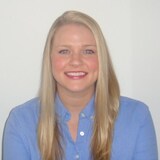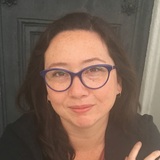Biomedical Image Analysis in Python
Learn the fundamentals of exploring, manipulating, and measuring biomedical image data.
Comienza El Curso Gratis4 horas15 vídeos54 ejercicios20.138 aprendicesDeclaración de cumplimiento
Crea Tu Cuenta Gratuita
o
Al continuar, acepta nuestros Términos de uso, nuestra Política de privacidad y que sus datos se almacenan en los EE. UU.¿Entrenar a 2 o más personas?
Probar DataCamp for BusinessPreferido por estudiantes en miles de empresas
Descripción del curso
The field of biomedical imaging has exploded in recent years - but for the uninitiated, even loading data can be a challenge! In this introductory course, you'll learn the fundamentals of image analysis using NumPy, SciPy, and Matplotlib. You'll navigate through a whole-body CT scan, segment a cardiac MRI time series, and determine whether Alzheimer’s disease changes brain structure. Even if you have never worked with images before, you will finish the course with a solid toolkit for entering this dynamic field.
¿Entrenar a 2 o más personas?
Obtén a tu equipo acceso a la plataforma DataCamp completa, incluidas todas las funciones.En las siguientes pistas
Tratamiento de imágenes en Python
Ir a la pista- 1
Exploration
GratuitoPrepare to conquer the Nth dimension! To begin the course, you'll learn how to load, build and navigate N-dimensional images using a CT image of the human chest. You'll also leverage the useful ImageIO package and hone your NumPy and matplotlib skills.
- 2
Masks and Filters
Cut image processing to the bone by transforming x-ray images. You'll learn how to exploit intensity patterns to select sub-regions of an array, and you'll use convolutional filters to detect interesting features. You'll also use SciPy's ndimage module, which contains a treasure trove of image processing tools.
- 3
Measurement
In this chapter, you'll get to the heart of image analysis: object measurement. Using a 4D cardiac time series, you'll determine if a patient is likely to have heart disease. Along the way, you'll learn the fundamentals of image segmentation, object labeling, and morphological measurement.
Objects and labels50 xpSegment the heart100 xpSelect objects100 xpExtract objects100 xpMeasuring intensity50 xpMeasure variance100 xpSeparate histograms100 xpMeasuring morphology50 xpCalculate volume50 xpCalculate distance100 xpPinpoint center of mass100 xpMeasuring in time50 xpSummarize the time series100 xpMeasure ejection fraction100 xp - 4
Image Comparison
For the final chapter, you'll need to use your brain... and hundreds of others! Drawing data from more than 400 open-access MR images, you'll learn the basics of registration, resampling, and image comparison. Then, you'll use the extracted measurements to evaluate the effect of Alzheimer's Disease on brain structure.
Spatial transformations50 xpTranslations100 xpRotations100 xpAffine transform50 xpResampling and interpolation50 xpResampling100 xpInterpolation100 xpComparing images50 xpMean absolute error100 xpIntersection of the union50 xpNormalizing measurements50 xpIdentifying potential confounds100 xpTesting group differences100 xpNormalizing metrics100 xp
¿Entrenar a 2 o más personas?
Obtén a tu equipo acceso a la plataforma DataCamp completa, incluidas todas las funciones.En las siguientes pistas
Tratamiento de imágenes en Python
Ir a la pistaconjuntos de datos
RSNA Hand RadiographOASIS Brain MeasurementsSunnybrook Cardiac MRITCIA Chest CT (Sample)colaboradores



requisitos previos
Intermediate Python¿Qué tienen que decir otros alumnos?
¡Únete a 15 millones de estudiantes y empieza Biomedical Image Analysis in Python hoy mismo!
Crea Tu Cuenta Gratuita
o
Al continuar, acepta nuestros Términos de uso, nuestra Política de privacidad y que sus datos se almacenan en los EE. UU.